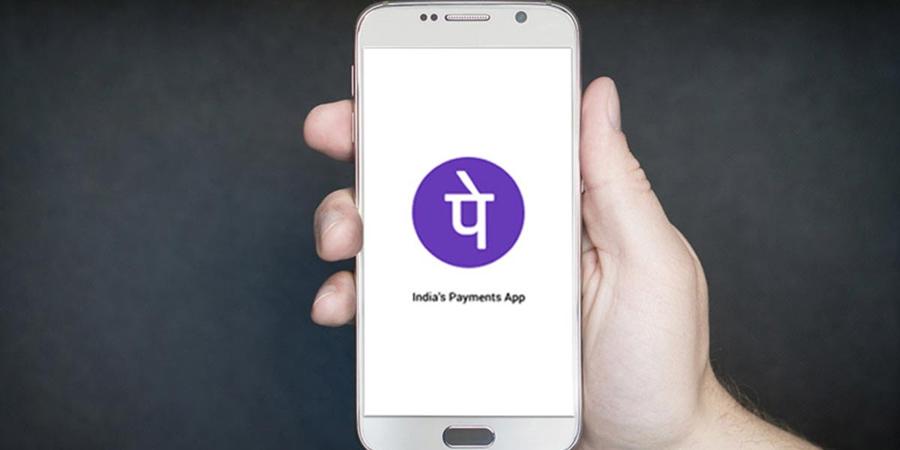Walmart-owned PhonePe has emerged as the posterboy of the unified payment interface or UPI ecosystem, leading consistently in terms of volume and value. Its leadership in UPI payments is also evident from its scale which grew over two folds and touched Rs 1,646 crore during FY22. However, outstanding losses continue to mount, if more slowly, as they crossed the billion dollar mark to Rs 8,340 crore. More on that later.
PhonePe’s revenue from operations surged 2.4X to Rs 1,646 crore during the fiscal year ending March 2022 from Rs 690 crore in FY21, as per the company’s annual financial statements with the Registrar of Companies (RoC).
Revenue from processing payment transactions accounted for nearly 99% of the total operating income. Collection from these services surged 2.4X to Rs 1,630 crore in FY22 from Rs 686 crore in FY21. It also generated Rs 13.61 crore via commission & processing fees on placement of insurance policies and distribution of mutual funds which ballooned 3.6X during the last fiscal year.
PhonePe also booked a non-operating revenue of Rs 46.54 crore majorly from interest on deposits, and gain on the sale of investments et al which drove its total revenue to Rs 1,693 crore during FY22.
When it comes to expenses, employee benefits emerged as the biggest cost element, forming 47% of the total expenses. This cost went up 41% to Rs 1,741 crore in FY22. Importantly, this expenditure also includes Rs 1,186 crore (32% of the total expenses) worth share based payments to employees.
Apart from its own employee base, it also employs external contractors, and expenditure on third-party workers surged 35% to Rs 311.43 crore in FY22.
PhonePe provides incentives to its users in various forms including cashback to promote its application. Expenditure on cashback and marketing grew 62% to Rs 866 crore in FY22. According to PhonePe, the increase is largely attributable to the marketing campaign during the ICC Cricket World Cup in 2021 and IPL in 2022.
The company also incurred payment processing charges and IT infrastructure expenses of Rs 199.2 crore and Rs 140 crore which increased 84.4% and 55.6% respectively in FY22.
The high cash burn on workforce and marketing have spiked its total cost by 50.8% to Rs 3,706 crore during FY22 as compared to Rs 2,457 crore in FY21. Despite an over 50% surge in expenses, PhonePe has managed to control its losses which grew 16.5% to Rs 2,014 crore during FY22.
Over two fold growth in scale helped the company to refine the EBITDA margin and ROCE to -106.50% and -88.73% during the last fiscal year. On a unit level, the company spent Rs 2.25 to earn a rupee in FY22. Moreover, the outstanding losses stood at Rs 8,340 crore during the same period.
PhonePe’s rival Google Pay’s revenue contracted 13.8% to Rs 1,265 crore during FY22 whereas Amazon Pay India crossed the Rs 2,000 crore revenue mark with a 16.6% growth during the same period. In the UPI ecosystem, PhonePe has more than 45% market share in terms of volume. The Sameer Nigam-led company surpassed Google Pay’s volume for the first time in December 2020 and has been leading since then.
The company aims to achieve profitability by 2023 and is planning to go public once its core businesses turn profitable. The high stock related expenses certainly indicate their intent, as they seek to avoid any unpleasant surprises for investors down the line. However, even the payments category, if not mature, has certainly started to climb the final gentle hill to a plateau where growth tapers off after penetrating the top 10-15% of India’s population. That makes the high cost structure a worry, and will not inspire confidence on future profit margins, whether they arrive in FY23 or beyond. With its high competition and government led pricing, the payments category shows no signs of throwing up any lucrative profit streams soon, even as it reaches newer segments all the time, at a lower cost than earlier.
The commissions and fees on selling insurance and mutual funds is certainly a promising business that needs to get some of the love the core payments business has been lavished over the years, as smaller, pureplay startups have done it with healthy margins.
Source @Entrackr



